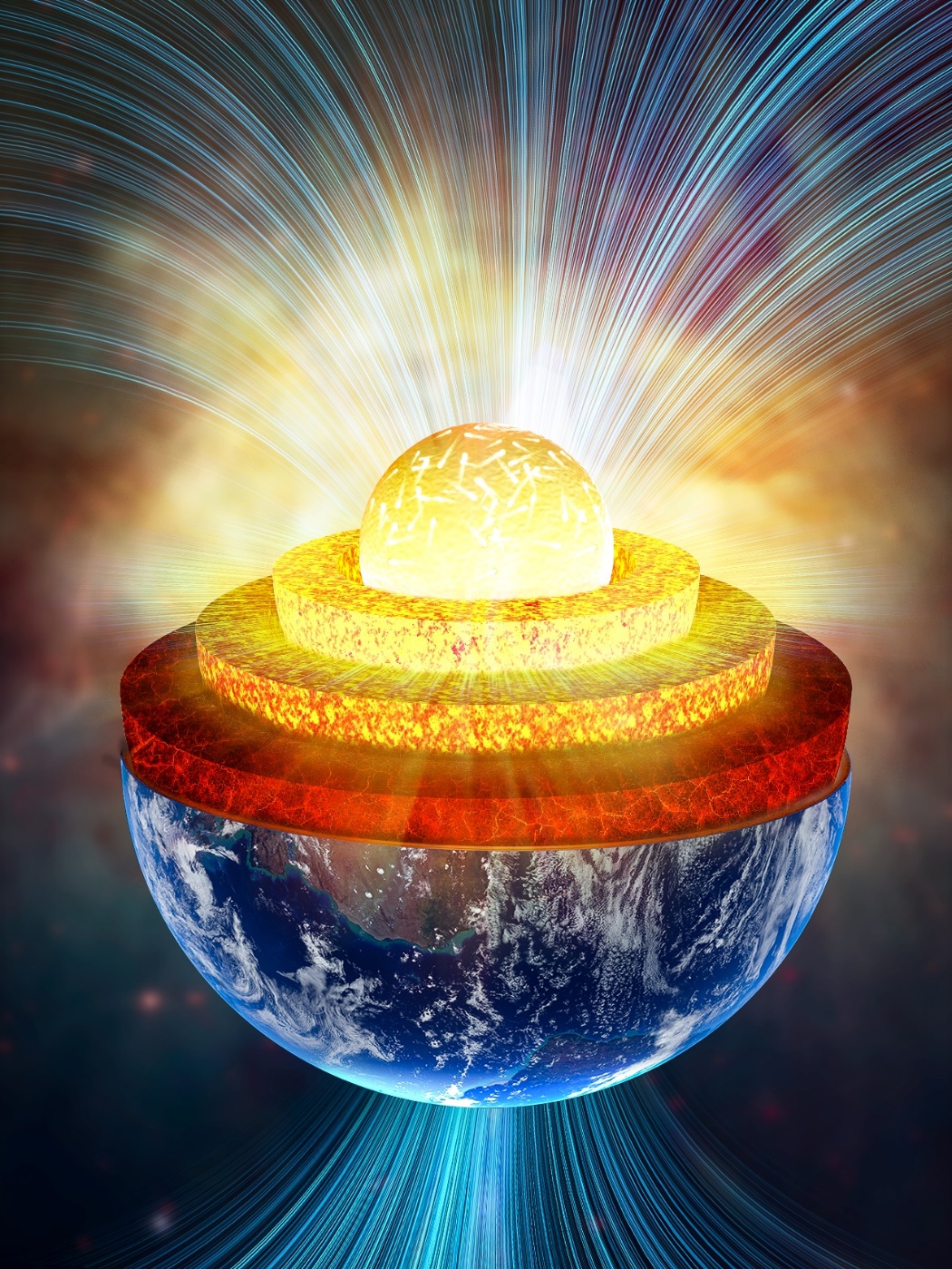Earth's core, the deepest part of our planet, is characterized by extremely high pressure and temperature. It is composed of a liquid outer core and solid inner core.
The inner core is formed and grows due to the solidification of liquid iron at the inner core boundary. The inner core is less dense than pure iron, and some light elements are believed to be present in the inner core.
A joint research team of Prof. LI Heping and Prof. HE Yu from the Institute of Geochemistry of the Chinese Academy of Sciences (IGCAS) and Prof. MAO Ho-kwang and Prof. KIM Duck Young from Center for High Pressure Science & Technology Advanced Research (HPSTAR) has found that the inner core of the Earth is not a normal solid but is composed of a solid iron sublattice and liquid-like light elements, which is also known as a superionic state. The liquid-like light elements are highly diffusive in iron sublattices under inner core conditions.
This study was published in Nature on February 9.
A superionic state, which is an intermediate state between solid and liquid, widely exists in the interior of planets. Using high-pressure and high-temperature computational simulations based on quantum mechanics theory, researchers from IGCAS and the Center for High Pressure Science & Technology Advanced Research (HPSTAR) found that some Fe-H, Fe-C and Fe-O alloys transformed into a superionic state under inner core conditions.
In superionic iron alloys, light elements become disordered and diffuse like a liquid in the lattice, while iron atoms remain ordered and vibrate about their lattice grid, forming the solid iron framework. The diffusion coefficients of C, H and O in superionic iron alloys are the same as those in liquid Fe.
“It is quite abnormal. The solidification of iron at the inner core boundary does not change the mobility of these light elements, and the convection of light elements is continuous in the inner core,” said Prof. HE Yu, the first and corresponding author of the study.
One longstanding mystery about the inner core is that it is quite soft, with quite low shear wave velocity. The researchers calculated the seismic velocities in these superionic iron alloys and found a significant decrease in shear wave velocity. “Our results fit well with seismological observations. It is the liquid-like elements that make the inner core soften,” said co-first author SUN Shichuan from IGCAS.
Highly diffusive light elements can affect seismic velocities, providing critical clues for understanding other mysteries in the inner core. The anisotropic structure, seismic wave attenuations, and structural changes of the inner core during past decades can be rationalized in the superionic model by considering the distribution and convection of these liquid-like elements in the inner core.

Earth's interior structure and superionic inner core (Image by IGCAS)
Contact:
HE Yu
Institute of Geochemistry of the Chinese Academy of Sciences
E-mail: heyu@mail.gyig.ac.cn
(By Prof. LI Heping's group)